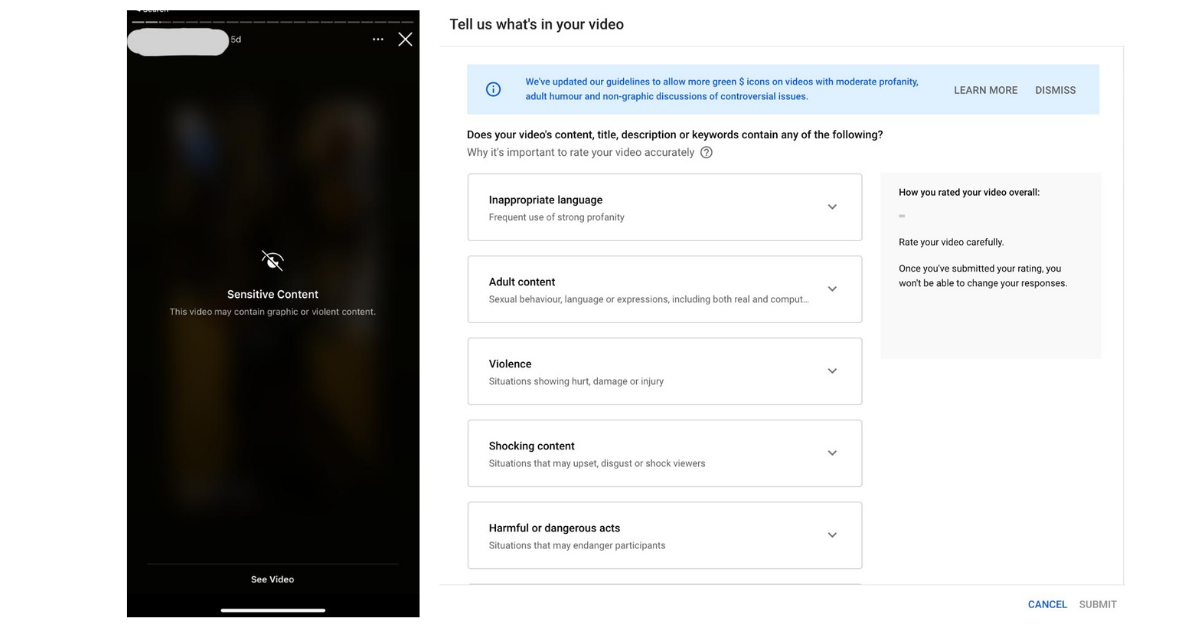Trigger warning is defined as “a statement at the beginning of a piece of writing, before the start of a film, etc., warning people that they may find the content very upsetting, especially if they have experienced something similar: Trigger warnings are supposed to protect people from post-traumatic flashbacks."— Cambridge Dictionary
The purview of the phrase 'trigger warning' (TW) has broadened in the digital content space where these warnings, also called content warning (CW) or content advisory, have been debated for the last decade. For some people, a piece of graphic media could trigger past trauma. A true depiction through graphic media sometimes is essential for bringing forth reality. But when is a trigger warning required? When must it be employed? How it must be employed? And does it has any use at all? We attempt to gather some resources to better understand. Because there are no rules when it comes to categorising content as safe or triggering.
Over the past few years, content creators on social platforms like Instagram, Twitter and Tik Tok have learnt to begin captions with "TW: Sensitive content". Content warnings help viewers make an educated choice whether or not they want to go ahead and consume that content, instead of the content auto-playing.
While social giants have a responsibility to moderate content, they argue that the sheer volume of it makes it unfathomable. However, YouTube, for instance, asks creators to disclose at length the nature of the content, if they choose to monetise the video. At this stage, bluffing to YouTube could lead to your channel facing serious repercussions. Social media platforms seem to have a way to flag sensitive content too. Instagram began blurring sensitive content in 2017. While scrolling on Instagram, you may have come across content that's hidden behind a sensitive content filter. This blurred screen generally hides content that is violent or anything else that the moderators at Instagram may deem sensitive, or offensive.

Facebook walks a similar line, and so does Tumblr. But there is no way for users to flag their own content with a warning, except add a note to the caption.
How to write Trigger/Content Warning?
Start your piece of content—a blog, story, social media caption, or video—with TW (Trigger Warning), or CW (Content Warning), followed by mentioning keywords that point at the nature of the content. But don't make the warning so detailed that it triggers the consumer even before they have delved into the said content. It's important to understand that content labelled CW/TW matters and that's why users should avoid using these ironically.
Everyday Feminism aptly illustrates some scenarios to explain trigger warnings and how they can help. Check out their comic strip to understand how a trigger warning can, sometimes, avert trigger situations for those who are susceptible to them.

HELLO! magazine is looking for bright and brilliant writers who can whip up a grammatically correct and stylish copy, are adept at meeting deadlines, good at chasing celebrities (for stories, not stalking), can ideate on their feet and enjoy the buzz of working for a luxury and lifestyle magazine. If you feel you fit the bill, reach out at: shraddha.chowdhury@hello-india.co.in.
Please note: Some relevant work experience is required for your application to be considered. Those who are interested can send their CV and writing samples to the ID mentioned above.
TOI online is looking for a skilled copy editor, with 3 to 5 years of work experience on the desk. In Mumbai.
Those interested, please email: jairaj.singh1@timesinternet.in
ABOUT THIS NEWSLETTER
This newsletter is an attempt to keep up and share all the latest and greatest stories in media and how they get done. Read about it here: About In Old News-Letter. And if you were forwarded this newsletter, here’s how you can sign up to get the latest editions as they come out!
